Fargues 2014
Analysis of Fargues 2014, which was released recently at €120 ex-négociant, the same as the 2013 release price, with a Wine Lister Quality score of 874:
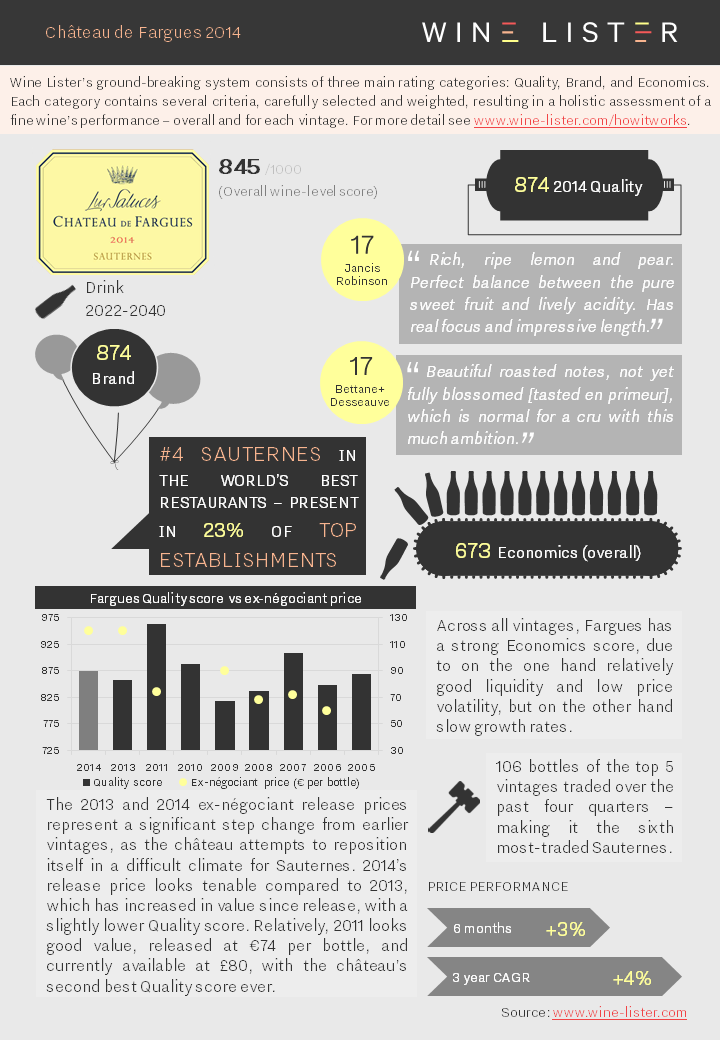
You can download the slide here: Wine Lister Fact Sheet Fargues 2014
Analysis of Fargues 2014, which was released recently at €120 ex-négociant, the same as the 2013 release price, with a Wine Lister Quality score of 874:

You can download the slide here: Wine Lister Fact Sheet Fargues 2014
Analysis of Les Forts de Latour 2010, which has released a second tranche this morning at €175 ex-négociant, up 8% on the initial 2011 en primeur release price (€162):
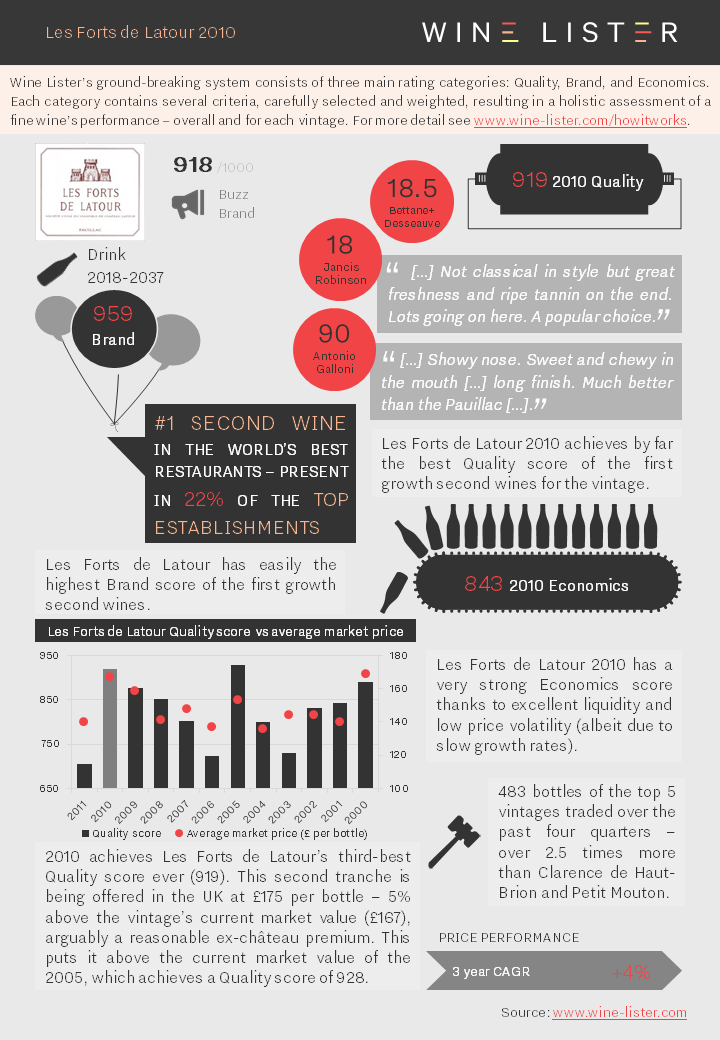
You can download the slide here: Wine Lister Fact Sheet Les Forts de Latour 2010
Analysis of Yquem 2015, which has been released this afternoon at €250 ex-négociant, the same as 2014, with a UK RRP of £264, an increase of 11% on 2014:
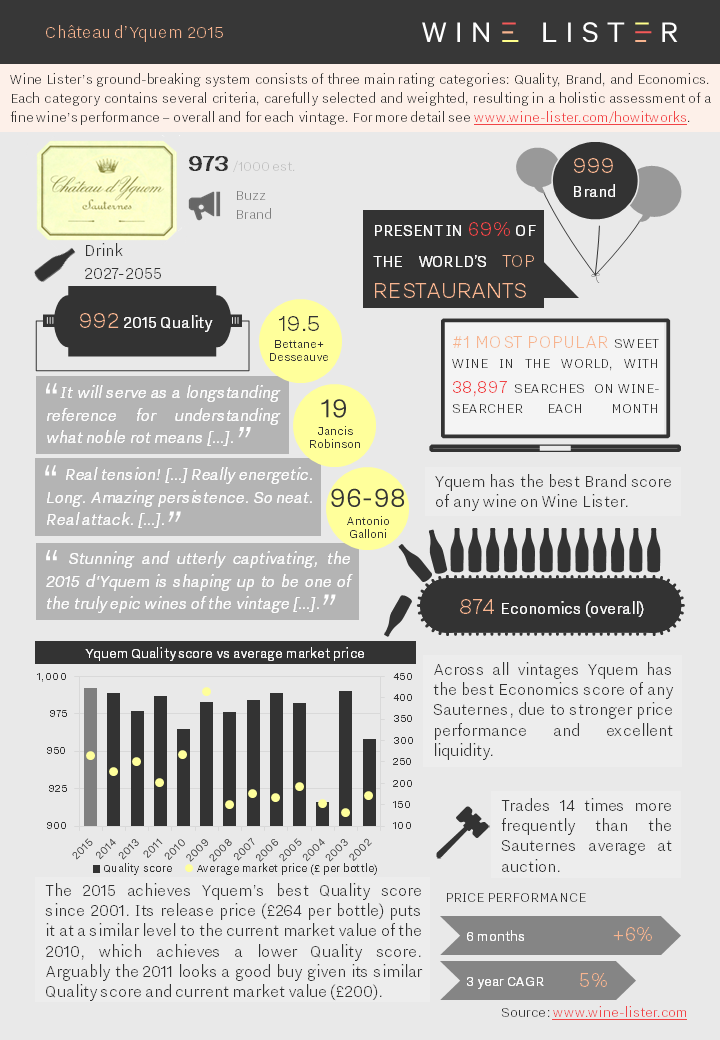
You can download the slide here: Wine Lister Fact Sheet Yquem 2015
Wine Lister’s Quality score measures a wine’s performance across two criteria – critics’ ratings and ageing potential. This week’s Listed section features Wine Lister’s top five Grands Crus Champagnes by Quality score. Each achieving a Quality score of over 950 points, these five Champagnes are amongst the strongest on Wine Lister in the category. The top three also happen to be Buzz Brands.
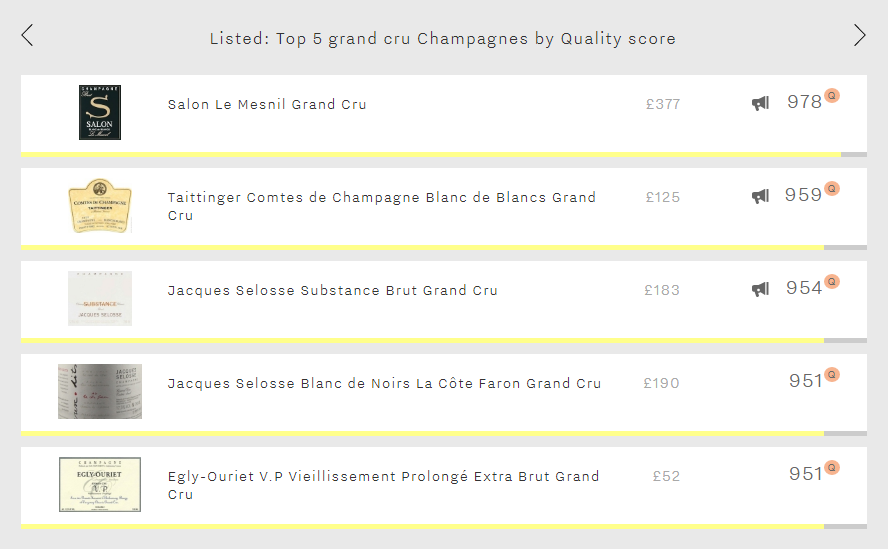
Top of the table is Salon, whose outstanding score of 978 puts it among the 20 best white wines on Wine Lister for quality. With 45,000 bottles produced only in great vintages, and aged at the château until deemed ready to drink, Salon is by far the most expensive of the five. Proving that good things come to those who wait, Salon 2006 was released in July this year, achieving a Quality score of 988, with Antonio Galloni stating that it would be an “utterly compelling Champagne to follow over the next several decades”.
Taittinger Comtes de Champagne Blanc de Blancs Grand Cru is also uniformly highly rated by the critics. With 170,000 bottles produced of the wine each vintage, it has by far the highest average production of the five, making its excellent Quality score all the more impressive.
Proving that outstanding quality is not only found in vintage Grands Crus Champagnes, the last three spots are filled by non-vintage wines. Jacques Selosse produces two of them, with Substance Brut Grand Cru edging out Blanc de Noirs La Côte Faron Grand Cru by three points in terms of quality. Both wines are produced in tiny quantities, with just 1,250 bottles of La Côte Faron leaving the estate each year, and just over double that of Substance.
The fifth spot is filled by Egly-Ouriet V.P Vieillissement Prolongé Extra Brut Grand Cru. 10,000 bottles are produced each year of this wine, whose Quality score (951) significantly outperforms both its Brand score (608) and Economics score (323). Available at nearly a quarter of the price of equally rated Selosse La Côte Faron, it looks excellent value for money.
Vérité Le Désir 2014 has been released this morning with a UK RRP of £300 per bottle. We summarise all the key points below:
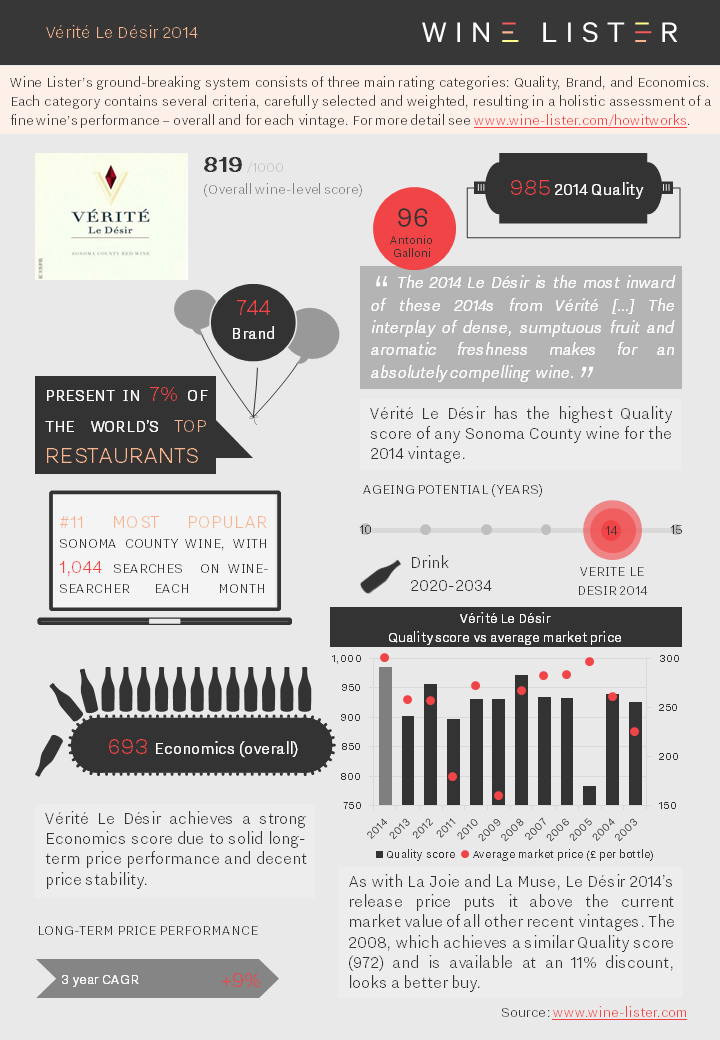
You can download the slide here: Wine Lister Factsheet Vérité Le Désir 2014
Vérité La Muse 2014 has been released this morning with a UK RRP of £300 per bottle. Our factsheet summarises all the key points:
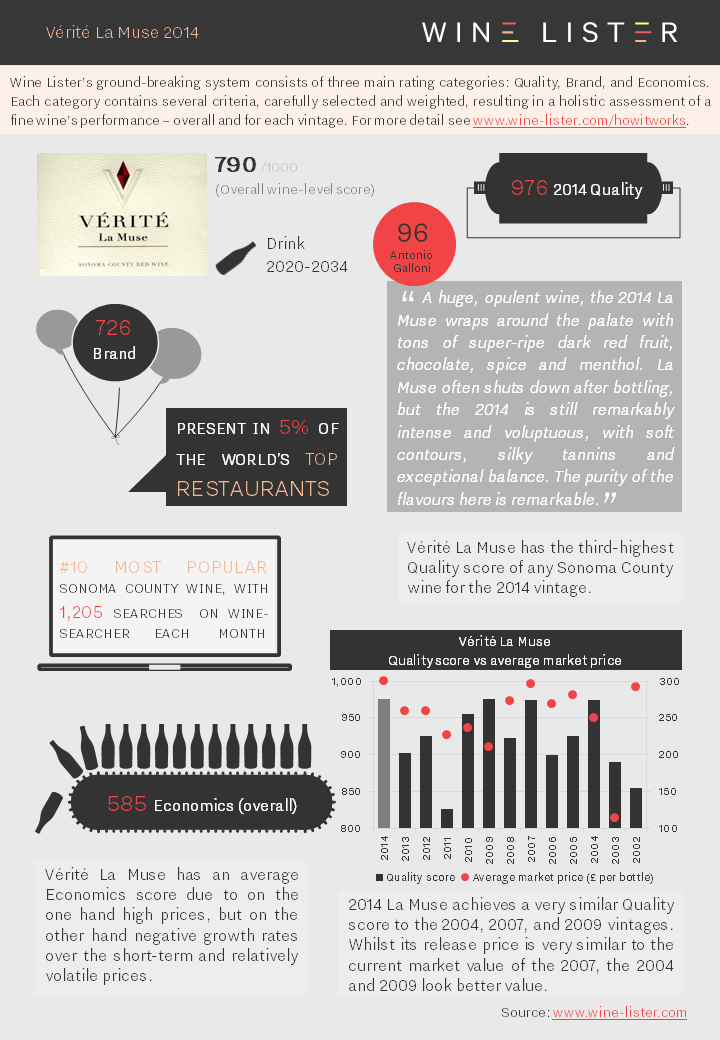
You can download the slide here: Wine Lister Factsheet Vérité La Muse 2014
Vérité La Joie 2014 has been released today with a UK RRP of £300. We summarise all the key facts below:
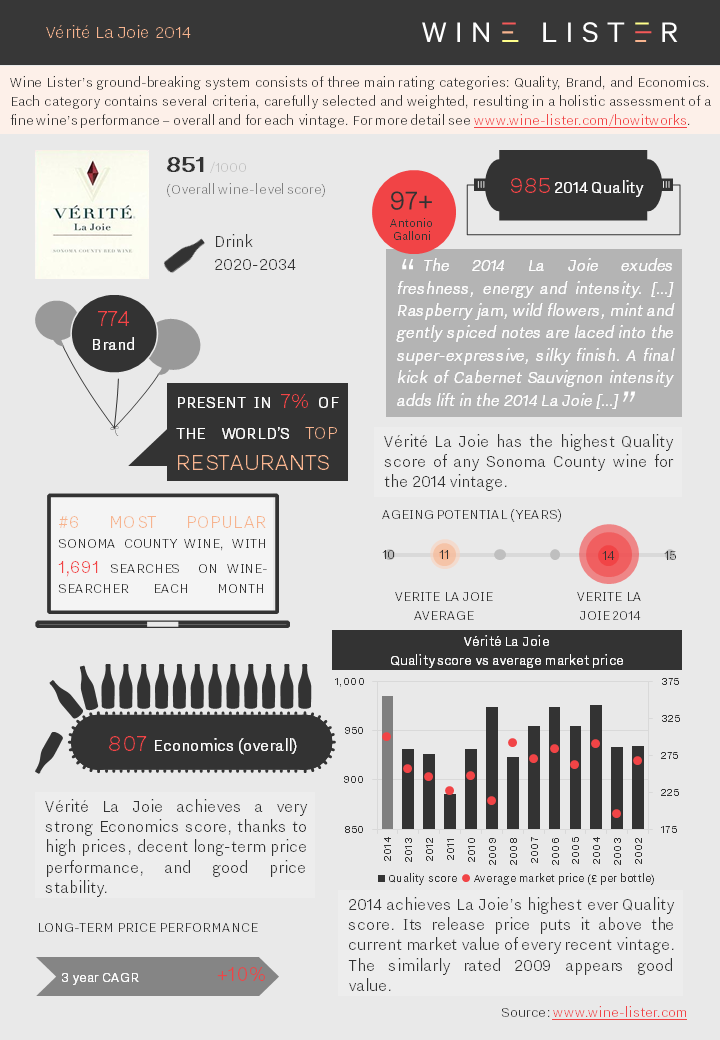
You can download the slide here: Wine Lister Factsheet Vérité La Joie 2014
Hommage à Jacques Perrin 2015 has been released today at £247 per bottle. We summarise all the key facts below:
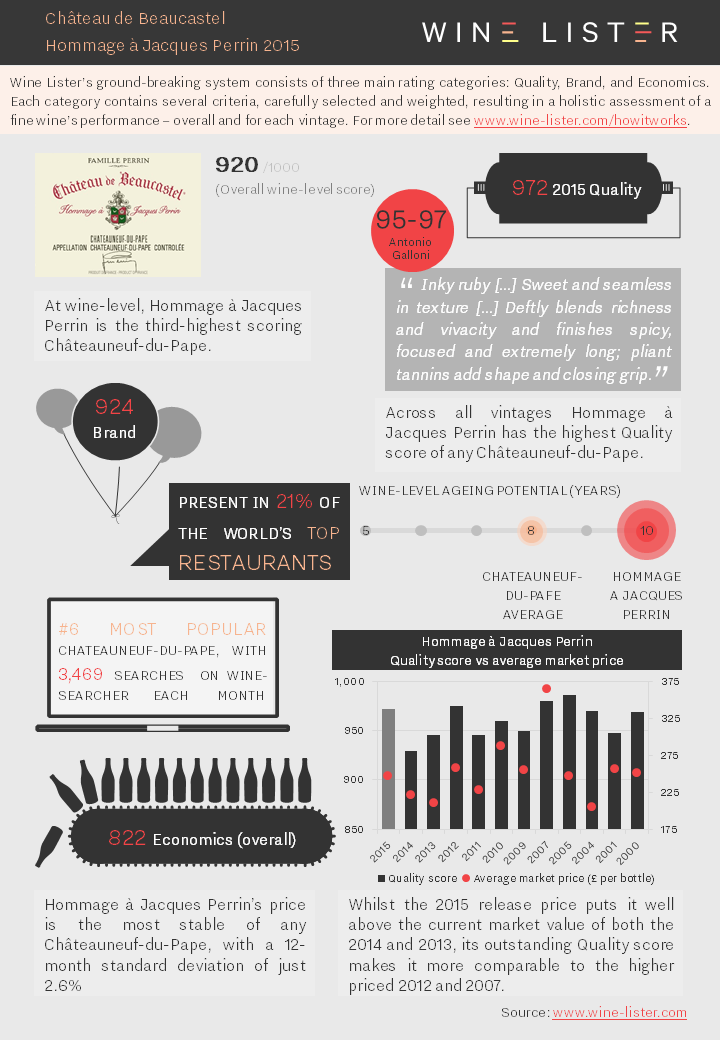
You can download the slide here: Wine Lister Factsheet Hommage à Jacques Perrin 2015
Stretching from the Atlantic coast in the West to Pouilly-sur-Loire in the East, the Loire Valley extends half way across France, and is home to some of the country’s great white wines. Reflecting the diversity of the region, the Loire’s top five whites comprise two dry Sauvignon Blancs, two sweet Chenin Blancs, and a dry Chenin Blanc. However, whilst these wines are diverse in style, they share several key characteristics – they are all produced biodynamically, in small quantities, and by cult winemakers.
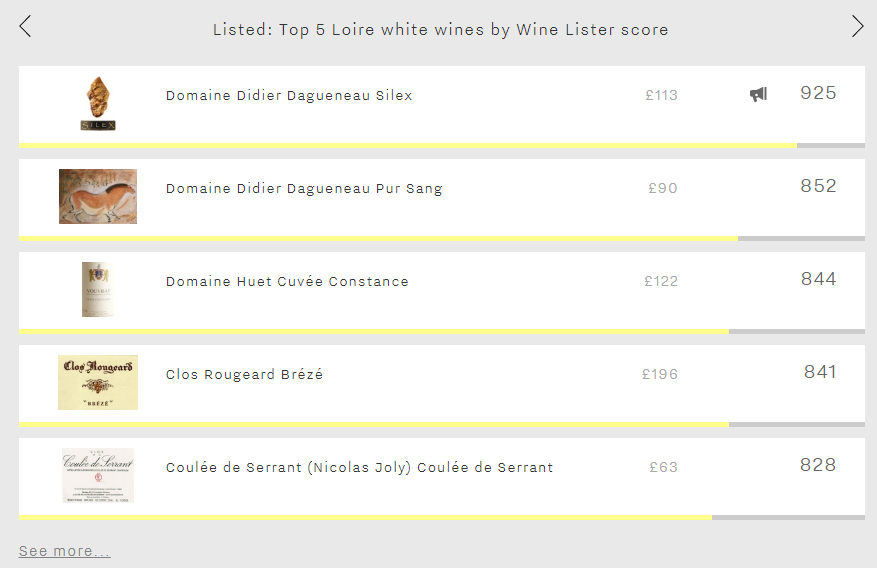
Leading the way are two Pouilly-Fumés from Domaine Didier Dagueneau – Silex and Pur Sang. One of Wine Lister’s Buzz Brands, Silex achieves excellent scores in each of Wine Lister’s three categories. However, it enjoys particularly strong brand recognition, present in 39% of the world’s best restaurants and receiving on average over 4,000 searches each month on Wine-Searcher. Pur Sang achieves its best score in the Economics category, thanks to strong price performance – with a three year CAGR of 14% and a six month growth rate of 13%.
Moving West to Vouvray, Domaine Huet Cuvée Constance comes next. Produced only in great vintages, this botrytised Chenin Blanc has the best Quality score of the group (981), and the 14th highest of all white wines on Wine Lister.
Continuing further down the valley, Clos Rougeard Brézé is in fourth place. The most expensive wine of the group, it has a remarkable three year CAGR of 33%, confirming that it is a wine on a strong upward trajectory. The fifth wine is Nicolas Joly’s Coulée de Serrant. Produced in the most westerly appellation of the group – Savennières Coulée de Serrant – Brand is its strongest category, present in 31% of top establishments.
Don’t forget – if you’re not yet a subscriber to Wine Lister, you can still fully explore this week’s five Listed wines, and those for the previous four weeks, via the homepage.
The 1855 Bordeaux classification might well be considered one of the earliest examples of a wine rating system. Classifying wines by six categories – including “unclassified” – might seem restrictive now (compared to Wine Lister’s 1,000 point scale), but the classification has proven to be highly influential and durable. This week’s Listed section focuses on the five Bordeaux fifth growths with the highest overall Wine Lister score, giving us an opportunity to see how the 160-year-old classification stacks up today.
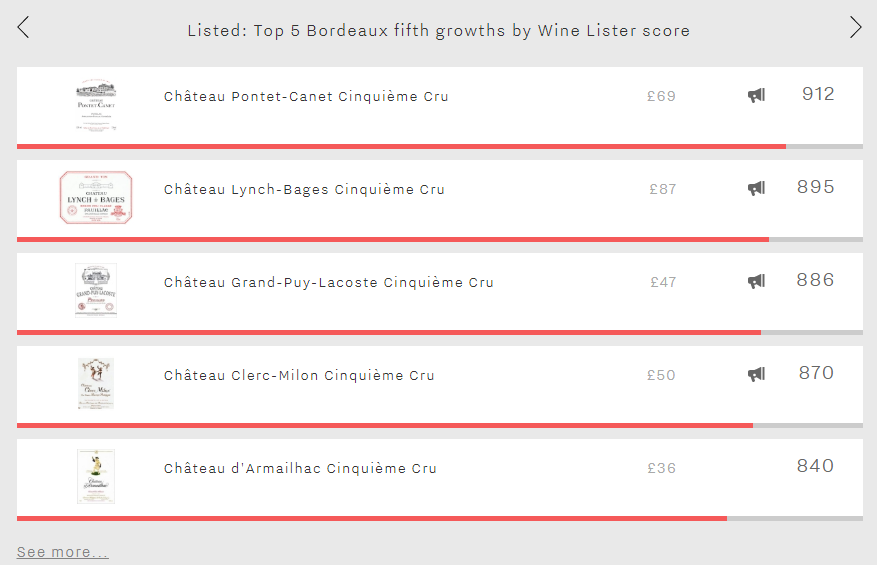
Whilst the 1855 classification used price as the yardstick by which a wine should be rated, Wine Lister’s holistic approach also takes into account quality, brand strength, and other economic metrics. The outcome is that with an average Wine Lister score of 881, these flying fifths outperform both the top five performing third growths and fourth growths (average of 863 and 834 respectively), beating the two classes across every category. Nonetheless, the top fifth growths trail the most highly-rated second growths and the five first growths by 48 and 86 points respectively overall.
Pontet-Canet is the leading fifth growth, with a score of 912. While all five wines perform well in terms of Brand score, Pontet-Canet’s first place position is supported by an excellent Quality score of 905, nearly 60 points above Grand-Puy-Lacoste, the second highest rated of the five in terms of quality.
Lynch-Bages comes next. Whilst it performs well in the Quality and Economics categories, it is in the Brand category that it comes into its own, with a near-perfect score of 998 putting it alongside first growths Haut-Brion and Margaux.
Grand-Puy-Lacoste takes third place with 886, scoring well across the board. It is one of the four Buzz Brands of the group, a fact which confirms that these top fifth growths currently confer more prestige than their third and fourth growth counterparts, which see fewer Buzz Brands within their respective top fives.
The last two spots are filled by wines from the Baron Philippe de Rothschild stable – Clerc-Milon and d’Armailhac. The former achieves the highest Economics score of the group – 908 – thanks to excellent price performance over both the long and short-term. Meanwhile, d’Armailhac’s score of 840, whilst 30 points below Clerc-Milon, puts it above all but four third and fourth growths.
These results blur the lines between the traditional classifications, demonstrating that price can no longer be looked at in isolation, and suggesting that a more nuanced and flexible approach needs to be taken in rating wines.
Remember that there are many ways to search Wine Lister, including by score, geography, and classification – which is how we calculated the findings above.